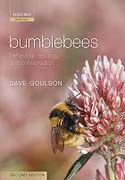
Bumblebees are familiar and charismatic insects, occurring throughout much ofthe world. They are increasingly being used as a model organism for studying a wide range of ecological and behavioural concepts, such as social organization, optimal foraging theories, host-parasite interactions, and pollination. Recently they have become a focus for conservationists due to mounting evidence of range contractions and catastrophic extinctions with some species disappearing from entire continents (e.g. in North America). Only by improving our understanding of their ecology can we devise sensible plans to conserve them. The role of bumblebees as invasive species (e.g. Bombus terrestris in Japan) has also become topical with the growing trade in commercial bumblebee nests for tomato pollination leading to establishment of non-native bumblebees in a numberof countries. Since the publication of the first edition of the book, there have been hundreds of research papers published on bumblebees. There is clearly a continuing need for an affordable, well-illustrated, and appealing text that makes accessible all of the major advances in understanding of the behaviour and ecology of bumblebees that have been made in the last 30 years. INDICE: Preface 1: Introduction 2: Thermoregulation 3: Social Organisationand Conflict 4: Finding a Mate 5: Natural Enemies 6: Foraging Economics 7: Exploitation of Patchy Resources 8: Choice of Flower Species 9: Intraspecific Floral Choices 10: Foraging Cues Gained from Other Bees 11: Competition and Niche Differentiation in Bumblebee Communities 12: Bumblebees as Pollinators 13: Conservation 14: Bumblebees Abroad; Effects of Introduced Bees References Index.
- ISBN: 978-0-19-955306-8
- Editorial: Oxford University
- Encuadernacion: Cartoné
- Páginas: 336
- Fecha Publicación: 17/09/2009
- Nº Volúmenes: 1
- Idioma: Inglés
